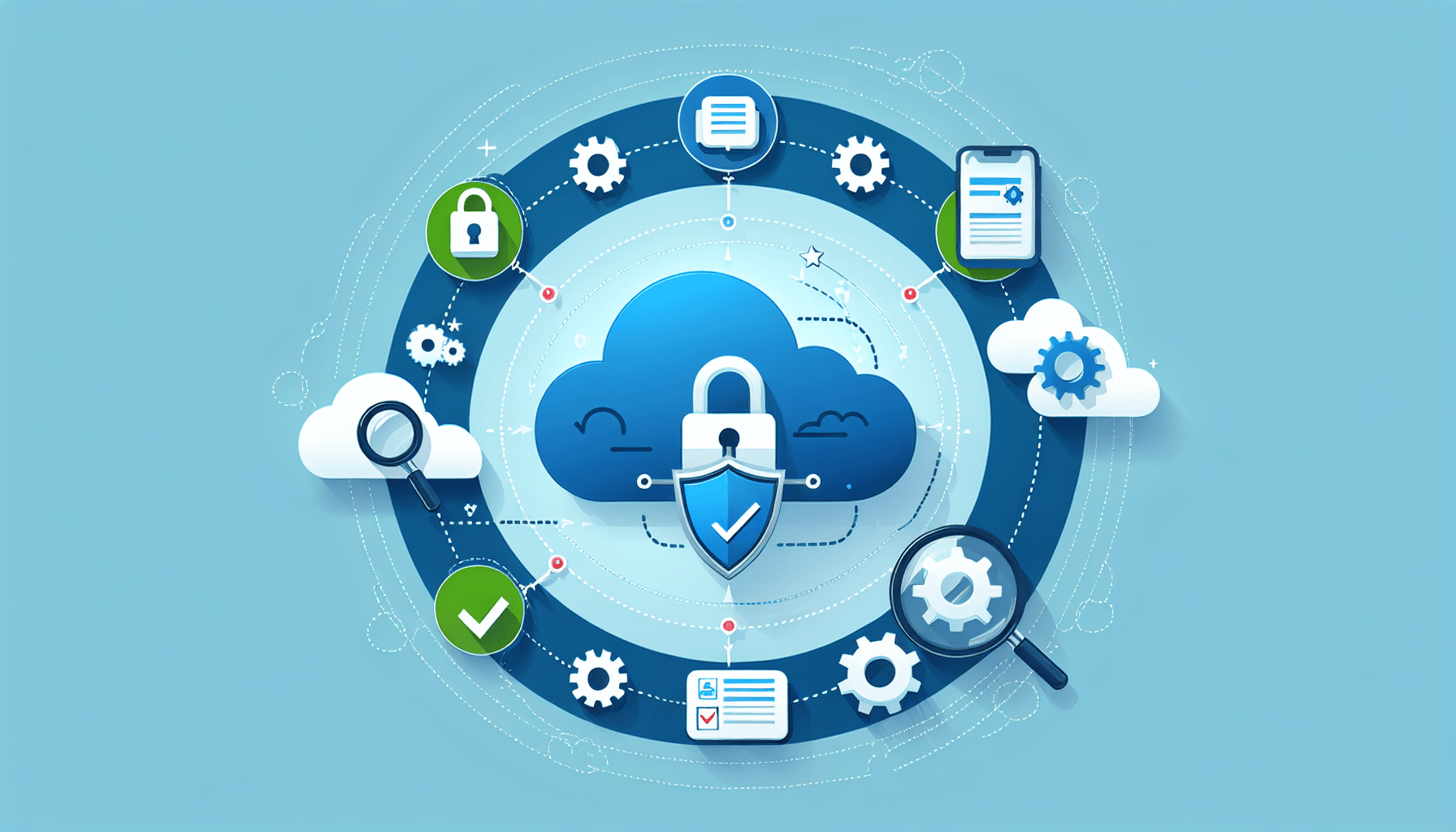In order to ensure the security of cloud-based systems, it is essential to understand the role that compliance plays in the assessment process. Compliance refers to the adherence to specific regulations, guidelines, and standards that are designed to protect sensitive information and data. By adhering to these compliance requirements, organizations can effectively mitigate risks and vulnerabilities that may arise within their cloud infrastructure. This article explores the importance of compliance in cloud security assessments, highlighting its role in safeguarding critical information and ensuring the overall integrity of cloud-based systems.

Introduction
Cloud security assessments play a crucial role in ensuring the security and protection of data in cloud computing environments. With the increasing adoption of cloud services by organizations, the need for robust security measures has become paramount. In this article, we will explore the concept of cloud security assessments, their importance in cloud computing, the role of compliance in ensuring security, the challenges faced in conducting assessments, and best practices for cloud security compliance.
Understanding Cloud Security Assessments
Definition and Objectives
Cloud security assessments refer to the process of evaluating the security controls, policies, and practices implemented in a cloud environment. The primary objective of these assessments is to identify and mitigate potential risks and vulnerabilities that could compromise the confidentiality, integrity, and availability of data stored in the cloud. By conducting cloud security assessments, organizations can assess the effectiveness of their security measures and ensure compliance with industry standards and regulations.
Common Challenges
Cloud security assessments come with their own set of challenges. The dynamic nature of cloud environments, the diverse technologies and service models, and the complex integration of various systems make it increasingly difficult to assess and manage security effectively. Lack of clarity in roles and responsibilities, limited visibility into cloud infrastructure, and the lack of standardized assessment methodologies further compound the challenges faced in conducting cloud security assessments.
Importance in Cloud Computing
Cloud computing has revolutionized the way organizations store, access, and process data. However, it also brings unique security risks that need to be addressed. Cloud security assessments are crucial in identifying these risks and providing organizations with the necessary insights to enhance their security posture. By conducting regular assessments, organizations can ensure compliance with industry standards, protect sensitive data, and build trust with their customers and stakeholders.
Compliance Frameworks and Standards
Overview of Compliance Frameworks
Compliance frameworks provide organizations with a systematic approach to assess and manage their security controls. These frameworks offer a set of best practices, guidelines, and standards that help organizations evaluate their security posture and make informed decisions to improve it. Some well-known compliance frameworks for cloud security assessments include the National Institute of Standards and Technology (NIST) Cybersecurity Framework, ISO 27001, and the Payment Card Industry Data Security Standard (PCI DSS).
Key Compliance Standards for Cloud Security Assessments
Compliance standards specific to cloud security assessments play a vital role in ensuring the adoption of best practices and the adherence to industry-specific regulations. Some key compliance standards for cloud security assessments include the Cloud Security Alliance (CSA) Cloud Controls Matrix (CCM), the European Union’s General Data Protection Regulation (GDPR), and the Health Insurance Portability and Accountability Act (HIPAA) for healthcare organizations.
Benefits of Complying with Standards
Compliance with industry standards and frameworks offers several benefits to organizations. Firstly, it helps organizations demonstrate their commitment to security, gaining the trust of customers and stakeholders. Compliance also ensures that organizations have a structured approach to security, reducing the likelihood of security breaches. Furthermore, complying with standards helps organizations avoid legal and regulatory penalties, thereby protecting their reputation and financial stability.
The Role of Compliance in Cloud Security Assessments
Ensuring Data Protection and Privacy
Compliance plays a significant role in ensuring the protection and privacy of data stored in the cloud. By adhering to compliance standards, organizations establish a framework of security controls and measures that safeguard sensitive information from unauthorized access, disclosure, or modification. Compliance requirements often include encryption, access controls, and regular audits to ensure data protection and privacy.
Addressing Legal and Regulatory Requirements
Cloud services operate in a global landscape, making it essential for organizations to address legal and regulatory requirements specific to each jurisdiction. Compliance with regulations, such as GDPR or HIPAA, helps organizations ensure that they handle personal or sensitive data in accordance with the law. Non-compliance can lead to severe legal consequences, financial penalties, and reputational damage.
Mitigating Risks and Vulnerabilities
Cloud environments are susceptible to various risks and vulnerabilities, such as data breaches, insider threats, and misconfigurations. Compliance standards mandate the implementation of security controls and measures to mitigate these risks effectively. By conducting regular assessments, organizations can identify vulnerabilities and address them promptly, reducing the likelihood of security incidents.
Establishing Trust and Transparency
Compliance with industry standards and frameworks helps organizations establish trust and transparency with their customers and stakeholders. By demonstrating adherence to recognized security practices, organizations instill confidence in their ability to protect sensitive data. Compliance also enhances transparency by providing clear guidelines and requirements for security, ensuring that all stakeholders are aware of the measures in place to protect their data.

Compliance Controls and Measures
Implementation of Security Controls
Compliance assessments require organizations to implement a robust set of security controls and measures. These controls can include access controls, encryption, intrusion detection systems, and secure configuration management. The implementation of these controls is crucial in protecting data from unauthorized access, maintaining data integrity, and ensuring the availability of cloud services.
Continuous Monitoring and Auditing
Compliance is an ongoing effort that requires continuous monitoring and auditing of security controls. Organizations must establish processes and systems to detect and respond to security incidents promptly. By regularly monitoring and auditing their cloud environment, organizations can identify any deviations from the established security controls and take corrective actions to maintain compliance.
Incident Response and Remediation
Compliance with industry standards includes having an effective incident response plan in place. In the event of a security incident or breach, organizations must be prepared to respond quickly and take appropriate remediation measures. Incident response plans should outline roles and responsibilities, communication protocols, and steps to contain and mitigate the impact of the incident.
Compliance Assessments in Cloud Environments
Conducting Compliance Audits
Conducting compliance audits is a critical component of cloud security assessments. Organizations can either conduct internal audits or seek the assistance of third-party auditors to assess their compliance with industry standards and regulations. Compliance audits involve evaluating the effectiveness of security controls and measures, identifying areas of improvement, and ensuring that the organization is meeting its compliance obligations.
Importance of Third-Party Assessments
Third-party assessments bring objectivity and expertise to cloud security assessments. Independent auditors can provide valuable insights and recommendations that help organizations enhance their security posture. Third-party assessments also add credibility to an organization’s compliance efforts by demonstrating that an external entity has verified the effectiveness of its security controls.
Aligning Cloud Security with Compliance Requirements
Cloud service providers play a crucial role in ensuring compliance with industry standards and regulations. Organizations should choose cloud service providers that have demonstrated compliance with relevant standards and offer the necessary security controls and measures. By selecting a provider that aligns with compliance requirements, organizations can reduce the burden of implementing and maintaining security controls themselves.
Compliance Challenges in Cloud Security Assessments
Complexity of Cloud Infrastructure
Cloud environments are complex, comprising various components and services provided by different vendors. This complexity makes it challenging to assess and manage security effectively. Organizations must have a clear understanding of their cloud infrastructure and how each component interacts with the others to ensure comprehensive security assessments.
Data Sovereignty and Cross-Border Compliance
Organizations that operate in multiple jurisdictions face the challenge of complying with different data protection and privacy laws. The concept of data sovereignty, which refers to the requirement of data to be stored in specific geographic locations, adds another layer of complexity. Organizations must navigate the legal and regulatory landscapes of each jurisdiction to ensure compliance with cross-border data transfer requirements.
Shared Responsibility Model
In cloud computing, the responsibility for security is shared between the cloud service provider and the customer. This shared responsibility model can lead to confusion regarding the roles and responsibilities for implementing security controls. Organizations must clearly understand their responsibilities and work closely with their cloud service provider to ensure that all necessary security measures are in place.
Best Practices for Cloud Security Compliance
Developing a Comprehensive Compliance Strategy
Organizations should develop a comprehensive compliance strategy that aligns with their business objectives and industry-specific regulations. The strategy should outline the compliance frameworks and standards to be followed, the security controls to be implemented, and the processes for monitoring and auditing compliance. A well-defined compliance strategy provides organizations with a roadmap for achieving and maintaining compliance.
Implementing Security Controls and Measures
Implementing robust security controls and measures is essential for cloud security compliance. Organizations should identify the relevant controls based on industry standards and customize them to their specific cloud environment. This includes implementing access controls, encryption, intrusion detection systems, and regular vulnerability scanning. Regular updates and patches must also be applied to ensure the security of the cloud environment.
Regular Training and Awareness Programs
Employees play a vital role in maintaining cloud security compliance. Organizations should conduct regular training and awareness programs to educate employees about their roles and responsibilities in ensuring security. Training programs should cover topics such as data handling, password security, and incident response. By keeping employees well-informed, organizations can create a culture of security and minimize the risk of security breaches.
Benefits of Compliance in Cloud Security Assessments
Enhanced Data Protection and Privacy
Compliance with industry standards and regulations ensures enhanced data protection and privacy in cloud environments. By implementing the necessary security controls and measures, organizations can safeguard sensitive information from unauthorized access and maintain data integrity. Compliance requirements also promote encryption, access controls, and regular monitoring to ensure data protection and privacy.
Reduced Legal and Regulatory Risks
Non-compliance with industry standards and regulations can lead to severe legal and regulatory consequences. Organizations that fail to comply with data protection laws or industry-specific regulations can face financial penalties, lawsuits, and reputational damage. By ensuring compliance with relevant standards, organizations can mitigate legal and regulatory risks and protect their business interests.
Improved Reputation and Customer Trust
Maintaining compliance with industry standards and regulations helps build trust with customers and stakeholders. Compliance demonstrates an organization’s commitment to security and data protection. Customers are increasingly concerned about the security of their data, and by complying with recognized standards, organizations can instill confidence and differentiate themselves from competitors. Compliance also contributes to building a positive reputation, which is essential for long-term business success.
Conclusion
Cloud security assessments and compliance go hand in hand in ensuring the protection and integrity of data stored in cloud environments. By understanding the objectives, challenges, and benefits of cloud security assessments, organizations can enhance their security posture, address legal and regulatory requirements, and build trust with their customers. Through the implementation of robust security controls, continuous monitoring, and adherence to industry standards, organizations can mitigate risks, ensure data protection, and maintain compliance in the ever-evolving landscape of cloud computing.



